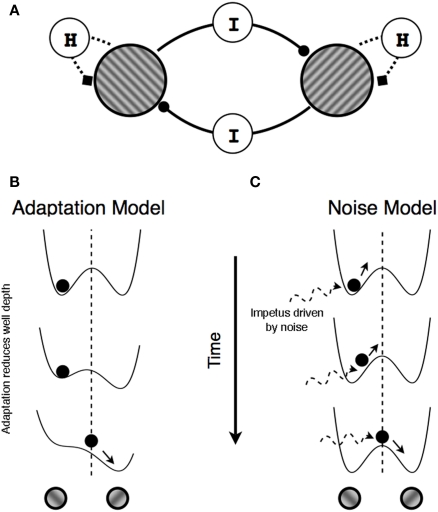Figure 1.
Mechanisms producing perceptual alternations. (A) Schematic illustration of reciprocal inhibition network in which neurons representing the left- and the right-titled tilted gratings mutually inhibit one another (components labeled I) and, at the same time, undergo self-adaptation (the components labeled H). (B,C) Double well potential landscape of the two models of rivalry alternations in which the position of the ball represents perceptual state at a given moment. (B) In adaptation models, potential landscape changes over time due to adaptation and a perceptual switch occurs when double well potentials temporarily form a single well potential owing to the reduced depth of the well in which the ball currently resides (adaptation). (C) In noise models, the two potential landscape remain unchanged but random fluctuations in the ball's location within a given well eventually provide sufficient impetus to project that ball into the other well.

